By Laura Bray, AAMN Class 49
WHAT KIND OF WEATHER DO WE GET?
Surprise! (Not.) July and August are our hottest months, and January the coolest. We generally get just under 30 inches of rain a year.1 But it can vary widely year-to-year.


Our severe weather threats primarily include flash flooding (see next section) and severe thunderstorms. We are mostly safe from hurricanes because they get their energy from the water and they dissipate as they move over land, although they can cause flooding. San Antonio does experience tornadoes, but mostly minor ones that cause little damage. “Tornado Alley” reaches only as far as the north suburbs of Austin. The last EF5 tornado to hit Texas struck Jarrell in 1997.
The NWS Austin/San Antonio office comprises 33 counties over an area the size of Maine. In addition to their work in forecasting, they coordinate with local emergency managers during severe weather events. When strong thunderstorms were predicted during 2024 Fiesta, NWS Austin/San Antonio deployed meteorologists to Oyster Bake (since the event is largely outdoors with little protection from the weather). Their input facilitated the decision to end the music program early and send participants away to find shelter.
In mid-May 2024, a storm that moved through central Texas produced 6” hail and caused over $1M in damage in Hays County.2
FLASH FLOOD ALLEY

Our area is well known across the country as Flash Flood Alley. About 125 people die every year in flash floods, half of them in vehicles.3
Our topography, heavy urban development, and poor soil all contribute to creating Flash Flood Alley. It largely follows the curve of the Balcones Escarpment. (See p. 245 in your “Texas Master Naturalist” textbook.)
Most Texas weather-related deaths are due to flooding.
Just before the Big Flood of 1998, the City of San Antonio opened a massive flood diversion tunnel that directs the water from the San Antonio River under downtown. The intake is located near the Pearl complex; the outflow is near Lone Star Blvd.4 It saved downtown and its businesses from the massive floodwaters in 1998 and other times.
NWS Austin/San Antonio promotes the “6/12/24 Rule” to help educate citizens about the dangers of moving water during flooding events.


LOCAL DROUGHT
Our region is also prone to drought.
The US Drought Monitor for Texas is produced by the National Drought Mitigation Center at the University of Nebraska-Lincoln. It’s updated every week.

EARNING VOLUNTEER HOURS AND ADVANCED TRAINING HOURS WITH THE WEATHER
Did you know you can earn volunteer hours by observing weather? You can, through the Community Collaborative Rain, Hail & Snow Network, or CoCoRaHS for short.
CoCoRaHS is a community-based network of volunteers of all ages and backgrounds working together to measure and map precipitation (rain, hail and snow).5 It’s easy (and free) to sign up. Just register on their website, purchase one of their rain gauges, and get to work on your daily observations.


If you’re faithful in posting your observations, you earn 2.5 hours a month in TMN volunteer hours.
There are often AAMN-approved Advanced Training opportunities for NWS Austin/San Antonio office tours (offered during Initial Training classes and opened to all AAMN members as space allows) and NWS SKYWARN® training. Storm spotters trained through the SKYWARN® program provide Situational Awareness and Ground Truth, since NWS radar doesn’t see everything.
SKYWARN® training prepares citizens for hazardous weather threats specific to South Central Texas. These sessions also serve as an opportunity for the public to learn how to assist local forecasters with weather reports during these critical weather events. Most SKYWARN® training sessions are conducted in the spring to coincide with severe weather season.6
In 2024, a SKYWARN® session was approved for AT credit for the Alamo Area chapter. Make sure to check the AAMN calendar for approved events.

Footnotes/Sources:
4: https://www.sariverauthority.org/projects/san-antonio-river-tunnel/
6: https://www.weather.gov/ewx/skywarn
Additional Family Resources:


